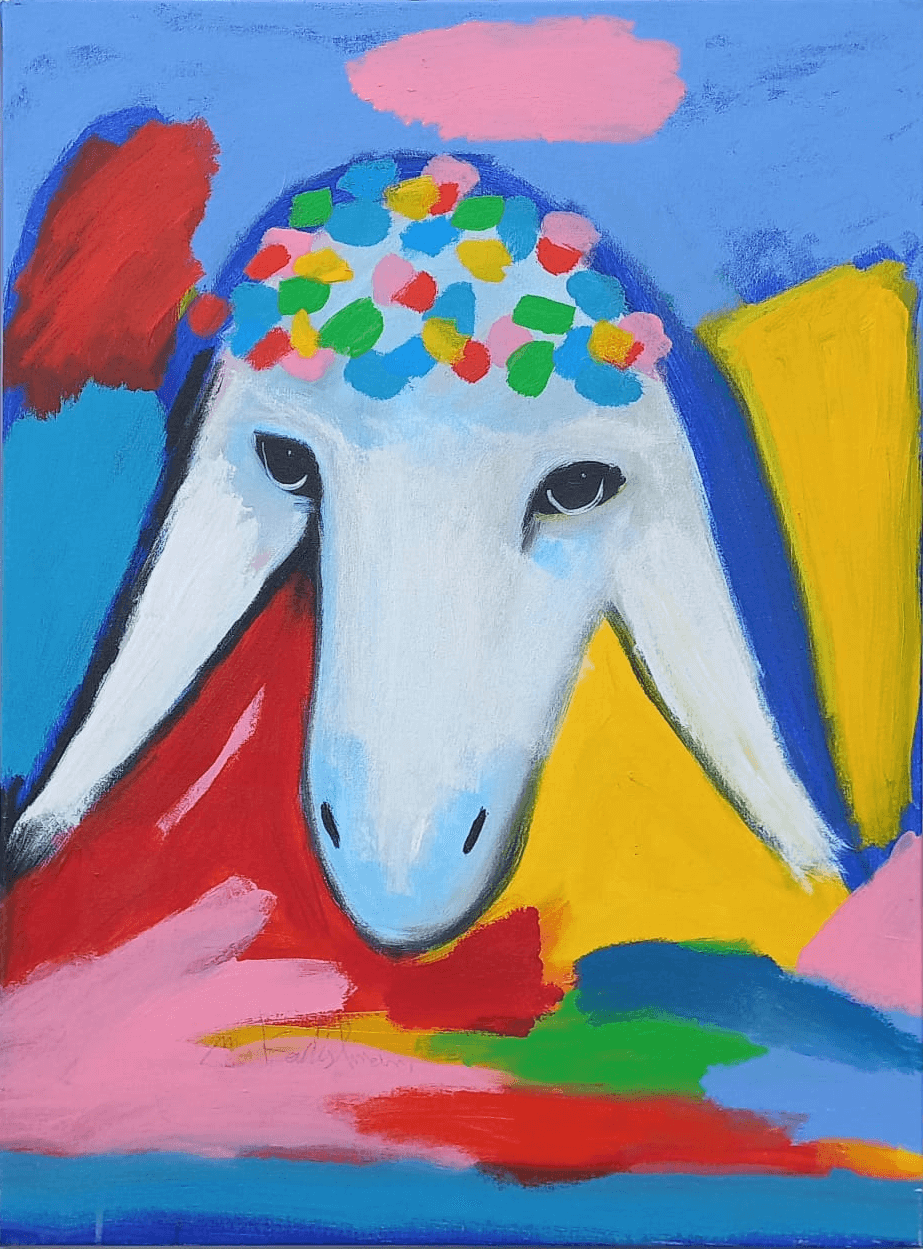

Kadishman in his apartment, Tel Aviv, 2010. (Photo by Dan Porges Images)
Menashe Kadishman one of Israel’s most influential artists, best known for his sculptures and his recurring motif of sheep.
Visitors to the Israel Museum in Jerusalem, the Tel Aviv Museum of Art, or Habima Square in Tel Aviv are immediately struck by Kadishman’s famous steel sculptures. Kadishman was a significant figure in the Environmental Art or Land Art movement of the late 1960s and early 1970s. A friend of Robert Rauschenberg, Andy Warhol, and Christo, Kadishman’s groundbreaking work The Forest anticipated Christo’s The Gates in Central Park by thirty-five years.
Born in Tel Aviv in 1932 to Zionist artists Bilha and Ben-Zion Kadishman, he began his artistic education under the guidance of Israeli sculptor Moshe Sternschuss at the Avni Institute of Art and Design (1947-1950) and later with sculptor Rudi Lehmann in Jerusalem (1954). Between 1950 and 1953, Kadishman worked as a shepherd on Kibbutz Ma’ayan Baruch, an experience that profoundly influenced his artistic career and themes.
In 1959, Kadishman moved to London to further his studies at Saint Martin’s School of Art and the Slade School of Art, studying under influential sculptors such as Anthony Caro and Reg Butler. His first major engagement with the theme of sheep came in the 1978 Venice Biennale, where he presented a flock of colored live sheep as a living art installation. By the 1990s, he began painting distinctive sheep portraits, each one unique. These portraits became his artistic signature, instantly recognizable and deeply symbolic.
The Symbolism of the Sheep
The motif of the sheep, perhaps Kadishman’s most iconic theme, emerged from his early years as a shepherd on a kibbutz. The sheep became a central symbol in his work, dedicated by him to the Jewish diaspora. In depicting sheep, each individually rendered, Kadishman expressed the individuality and distance within the diaspora while simultaneously celebrating the unity of the Jewish people as a collective—a flock. Kadishman’s work also explored the relationship between man and his environment, the intersection of industrial and organic forms, and the symbolic power of the ram in biblical narratives.
The Legacy of Menashe Kadishman
Menashe Kadishman, who passed away in 2015 at the age of eighty-two, is celebrated as one of Israel’s most pioneering artists, alongside Reuven Rubin and Mordecai Ardon. Kadishman’s prolific career produced a vast and diverse body of work, including thousands of sculptures, paintings, and drawings. Renowned for its profound engagement with both natural and urban landscapes of Israel, as well as exploration of the collective memory and the shared histories of the Israeli and Jewish people. Kadishman’s legacy lives on through his works, which adorn numerous public and private spaces across Israel and world wide. His art can be seen in museums, universities, hospitals, parks, and streets throughout the country, becoming an integral part of Israel’s cultural landscape.